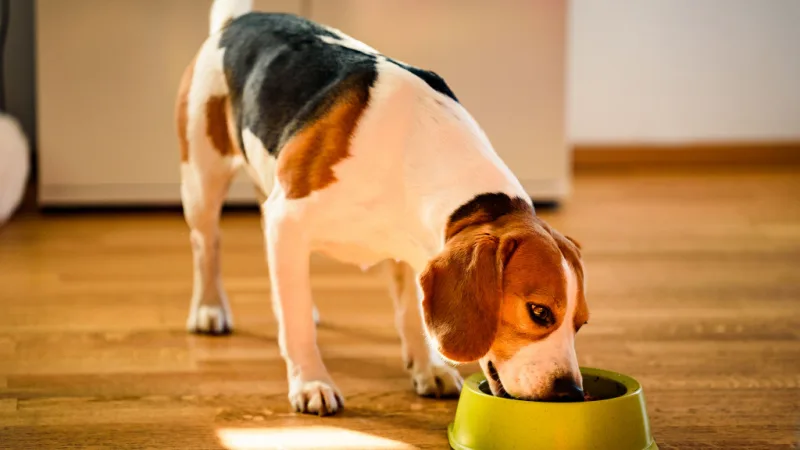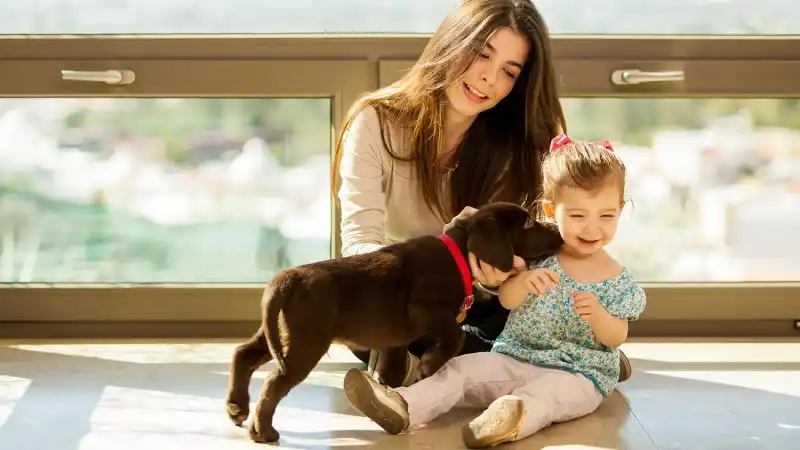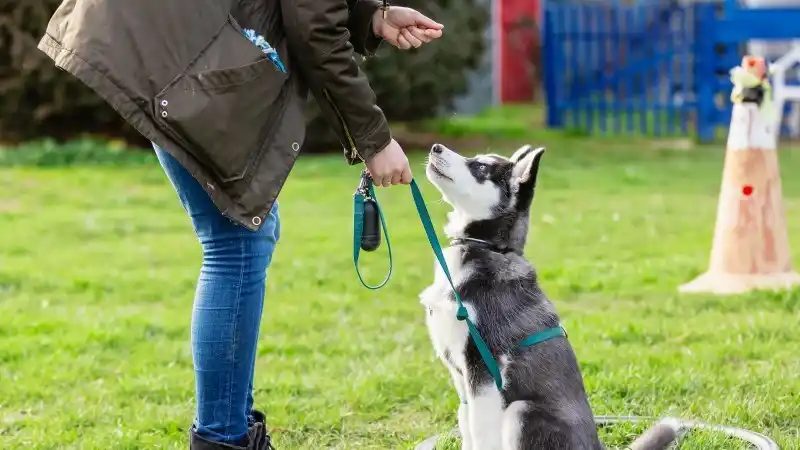Have a Picky Pup? Here's What to Do
Struggling to feed your picky pup? Here are 8 ways to entice your dog if they're not enthusiastic about mealtime, including food toppers, games, and fun flavors.

Struggling to find foods that your dog will eat? You're not alone. Half of dog owners struggle to get their dogs to eat their meals, and more than half consider their dogs to be picky eaters.
Read on to learn why your pup might be a picky eater, and how to make their mealtimes more exciting.
Why Your Dog Is a Picky Eater
While it may be that your dog just doesn't enjoy the specific food you're giving them, there are many other factors that can affect their appetite. Your dog's genetics, for example, can play a big part in their metabolism and interest in food.
Your pup's environment can also play a role in how they feel about their meals. If they feel stressed by their environment – whether it be loud noises, loneliness, or disruptions to their daily routine – they may lose their appetite.
Picky eating may also be a sign of an underlying health condition, so it's important to monitor your dog's behavior and appetite and consult with your veterinarian if you're concerned.
8 Ways to Entice Your Dog If They're a Picky Eater
Now that you know a little about why your dog might not be interested in their food, let's look at some ways you can help them enjoy their meals more.
1. Talk with Your Vet
Before you make any changes to your dog's meal routine, schedule an examination with your vet. Many underlying health factors can contribute to your dog's loss of appetite, so it's crucial to check in with your vet to rule out any medical issues.
Your vet may also be able to give you some specific recommendations based on your dog's individual health needs.
2. Add a Food Topper
If your dog isn't interested in their kibble, you can use food toppers to add more flavor or interesting textures to their food. There are a variety of different types of food toppers to choose from, including:
Broths like chicken, beef, or bone broth
Goat’s milk
Canned pumpkin
Fresh or frozen water-based vegetables
Fish oil
Wet food additives
3. Microwave Your Dog's Meal
If your dog is bored with their current food, try warming it up briefly in the microwave. If you're feeding your dog kibble, mix in a little bit of water before warming.
This will change the texture, strengthen the aroma of the food, and may even enhance the flavor, making it more appealing to your dog.
4. Set Specific Mealtimes and Stick to Them
Dogs, like children, do well with established routines. Setting and sticking to specific eating times gets your dog in the mindset for meals, and helps them learn when it's time to eat.
Put your dog's food out for 10-15 minutes at each designated mealtime. If they don't eat the food during those 10-15 minutes, remove the bowls and wait until the next mealtime to offer more food.
This establishes that mealtimes are your dog's only option, and it also helps their food stay fresh. Leaving food sitting out too long can lead to bacteria exposure.
5. Minimize Treats Throughout the Day
If your dog gets treats throughout their day, they may be too full to eat their food when dinner time comes around. If your pup shows little interest in their meals, try limiting the amount of treats you give them throughout the day.
It's also a good idea to avoid giving your dog treats right before mealtime, as this can diminish their appetite. Many dogs prefer treats to their regular meals, so if you give them too many, they may start to turn their noses up at their food.
6. Pay Attention to the Flavors and Textures that Your Dog Likes
Some dogs, like people, have certain foods that they prefer. If your dog seems unenthused by their meal choices, try switching up the flavors or varieties of food you're giving them.
Making changes to your dog's diet should always be done slowly over time, so talk with your vet before making too many drastic changes.
When you offer your dog new varieties of food to choose from, make a note of which options they gravitate towards. Some dogs prefer fish flavors, for example, while others prefer poultry options.
7. Turn Mealtime into a Game
Your dog may be refusing their food because they're bored of the typical mealtime routine. In the wild, your pup would need to work for their food, and some high-energy dogs benefit from turning dinnertime into a game.
Try using a slow feeder or puzzle toy to feed your dog's next meal. These add an extra challenge that makes eating more fun and can reinvigorate your dog's interest in their food.
You can also try sprinkling your pup's kibble onto a snuffle mat. These encourage your dog to use their nose to search for their food, making their meal seem more like a reward.
8. Create a Safe Space for Your Dog
If your dog shows little interest in their food, they may be uncomfortable in their environment. Pay attention to your dog's body language when you present their food.
If they're uncomfortable, they'll likely avoid eye contact or show you the whites of their eyes, also known as "whale eyes." Your dog may also be cowering or have their tail tucked, and you may see them repeatedly lick their lips or even yawn.
If your dog shows evidence of being uncomfortable, it's important to figure out the cause. Your dog may hear a loud noise outside that you haven't noticed, or they may feel pressured by other pets in the house.
Try setting up a specific area of your home that's quiet and away from other pets or children to help your four-legged friend feel safe.
Should You Worry About Your Picky Pup?
Having a picky eater as a pup is common, and it's likely that your dog is just bored of their current meal offerings. Always check with your vet to rule out any potential health issues, then work with your dog to make their mealtimes more exciting. With a little patience, you'll have your pup chowing down in no time!
Take some of the stress out of pet ownership with Accident & Illness Coverage from AKC Pet Insurance (underwritten by Independence American Insurance Company). Our pet insurance plans are designed to be there when you need them, allowing you to focus more on the health of your pet and less on costly veterinary bills. Click here for a quote today!

Richard has shared his life with pets since childhood, and currently has a rescue cat and dog. He works with veterinarians and pet businesses to improve their content. To find out more, please visit his [website](https://richardrowlands.com/).
READ MORE ARTICLES

